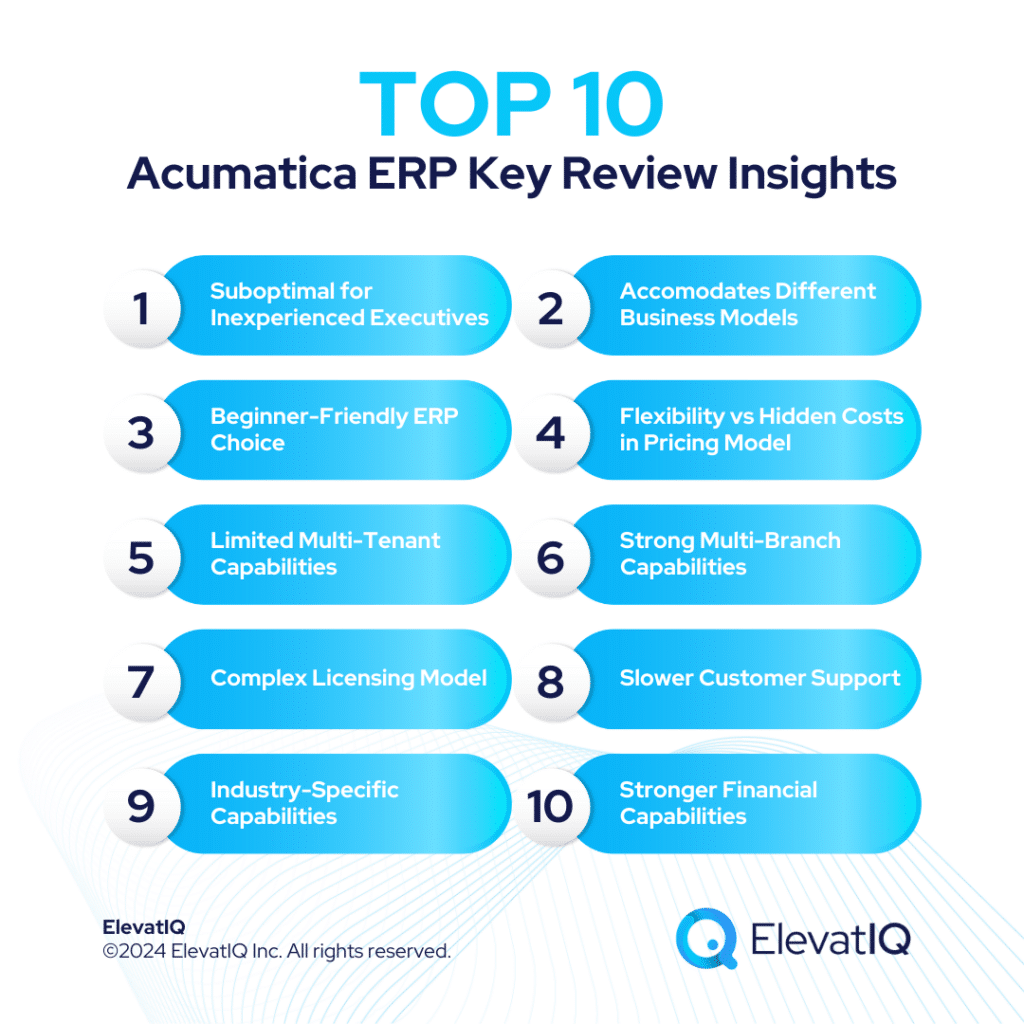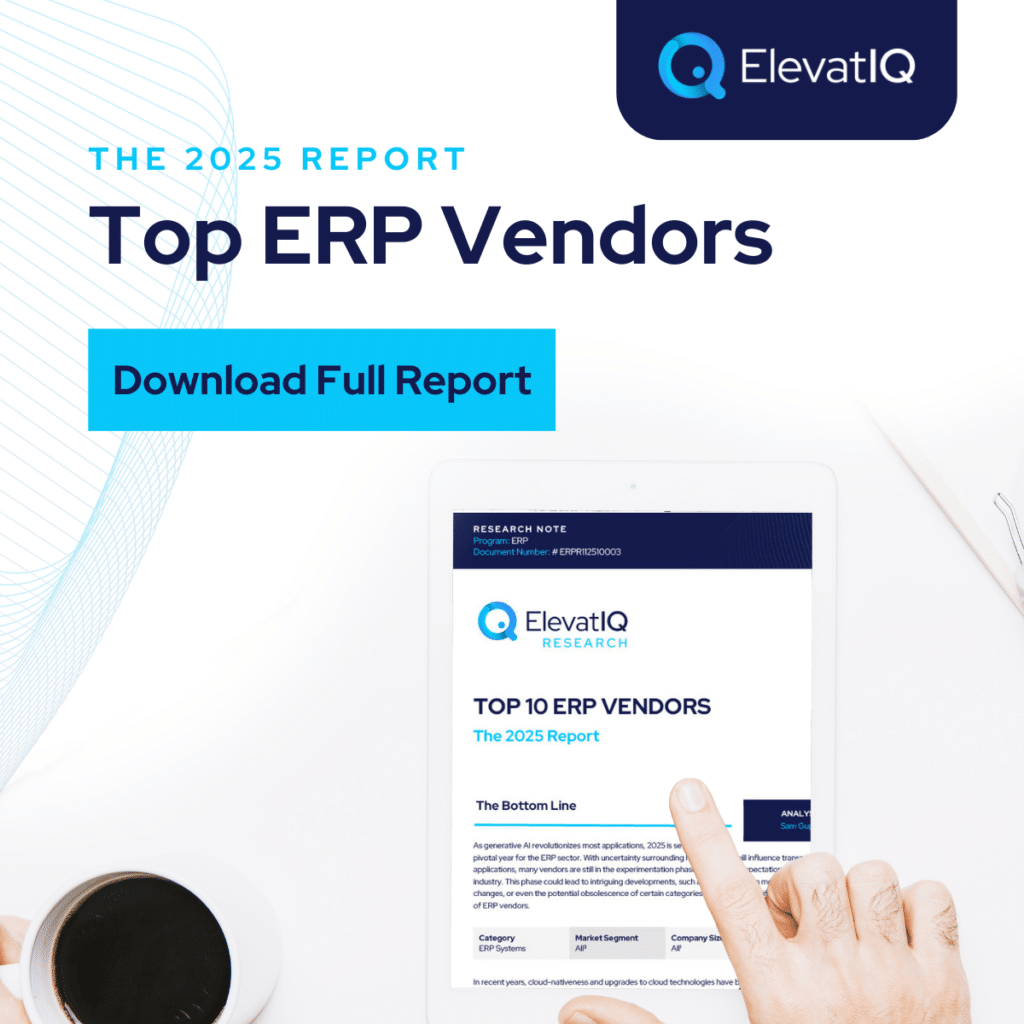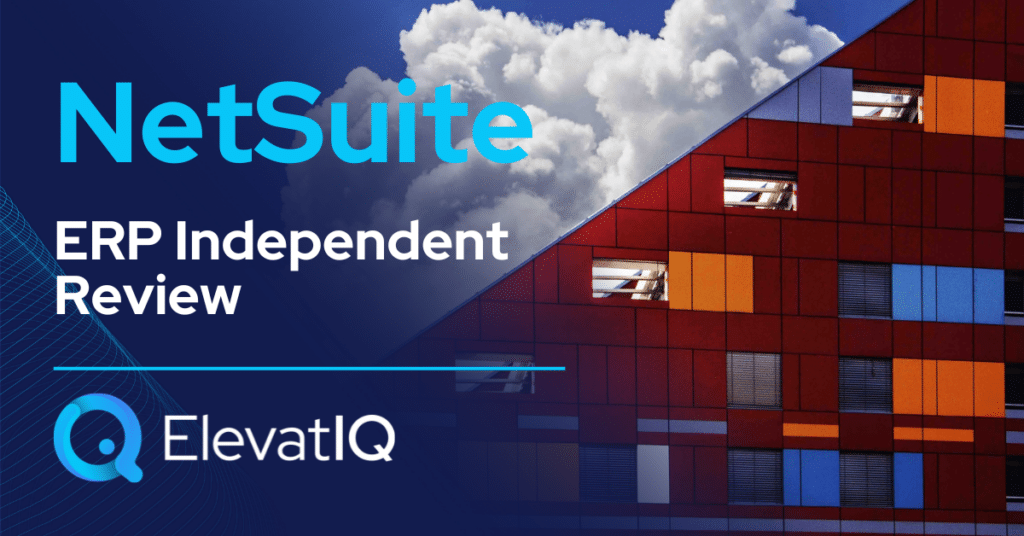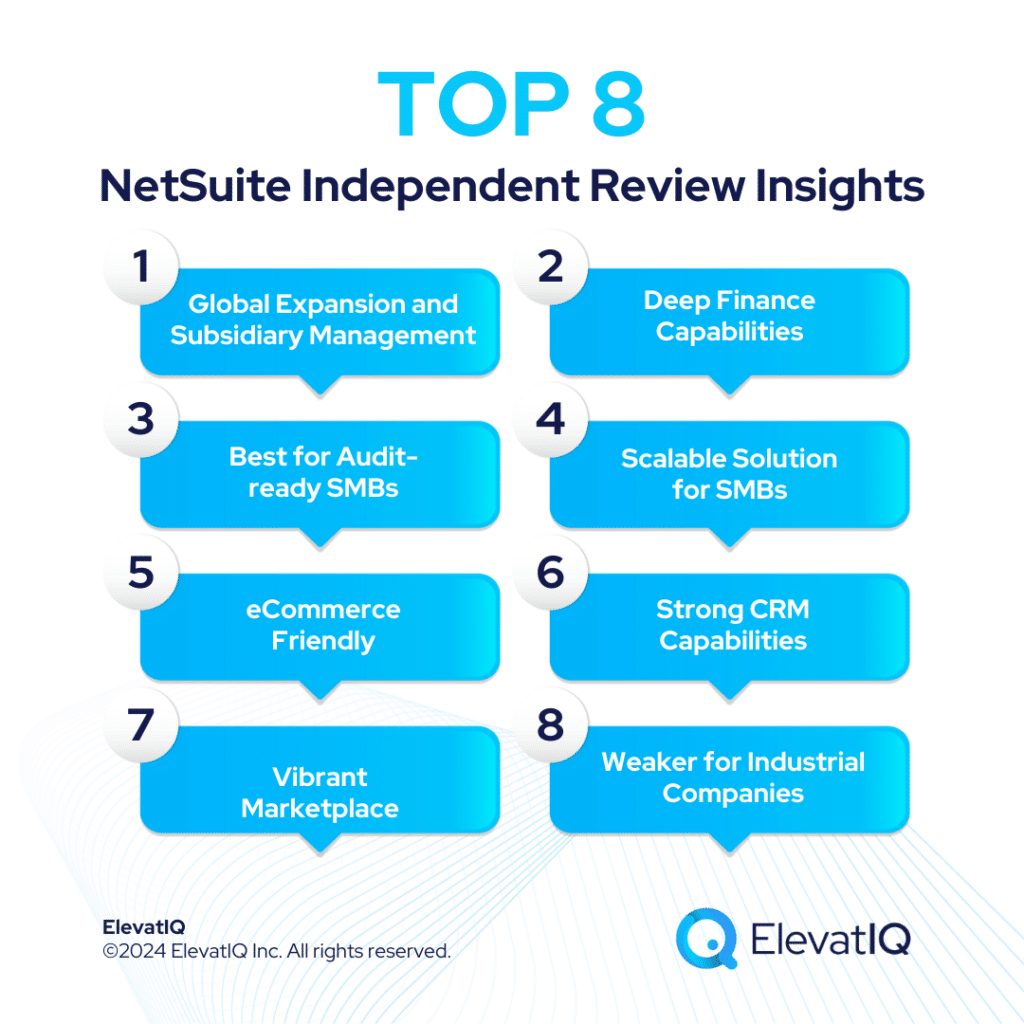Acumatica ERP Independent Review 2024
What is Acumatica ERP? Acumatica is one of three cloud-native ERP solutions similar to NetSuite and Sage Intacct. It has extensive multi-branch capabilities, making it friendlier for retail-centric operations. It can also host multiple business models as part of the same database spanning manufacturing, distribution, construction, and field service. Thus, making it friendlier for diverse manufacturing or distribution-centric operations. Because of its limited global operational capabilities, it primarily targets US and UK-based companies. Positioned as an ideal choice for companies within the $10-100 million revenue range, the majority of Acumatica’s customer base falls under this category.
Desiring a user experience akin to Odoo or Quickbooks, Acumatica ERP offers versatility to accommodate various business models: distribution, manufacturing, or construction-focused. Although Acumatica has limitations in mature features like dimensional inventory or allocation, it is an excellent initial system for companies looking to streamline inventory or costs. With transactional processing and some mature capabilities, such as batch transactional processing, Acumatica is positioned as a valuable choice for businesses venturing into their first or second ERP solution.
Acumatica ERP is a fit for companies seeking cloud-native experience, particularly emphasizing features like enterprise search and mobility over deeper operational capabilities. Despite its focus on small businesses, Acumatica lacks robust globalization and localization features, catering to a limited number of countries by default. This simplicity, however, benefits smaller companies by avoiding unnecessary layers of multi-entity operations. Although targeting small businesses, Acumatica ERP surpasses Odoo or Zoho with the flexibility of its data layers, necessitating consulting help for implementation. The perceived benefit of Acumatica’s pricing is also a challenge, as it’s notoriously difficult to understand and predict.


Key Review Insights of Acumatica ERP
1. Suboptimal for Inexperienced Executives
Companies lacking experienced CFOs, operations executives, or controllers particularly, adept in process and data translations for ERP systems may face challenges with Acumatica. Founder-led companies, particularly, might find implementation demanding due to the need for sophisticated skills in translating manual processes. Thus, they might struggle to adapt to Acumatica’s structured data model with intricate business rules for enhanced financial control.
2. Accommodates Different Business Models
Desiring a user experience akin to Odoo or Quickbooks, Acumatica ERP also offers versatility to accommodate various business models. Therefore, an advantage for those engaged in diverse operations or undergoing M&A activities.

3. Beginner-Friendly ERP Choice
Although Acumatica ERP has limitations in mature features like dimensional inventory or allocation, it is an excellent initial system for companies looking to streamline inventory or costs. With transactional processing and some mature capabilities, such as batch processing, Acumatica is positioned as a valuable choice for businesses venturing into their first or second ERP solution.
4. Flexibility vs Hidden Costs in Pricing Model
Acumatica ERP offers consumption-based pricing and unlimited users. While consumption-based pricing provides flexibility, the unlimited user proposition may entail hidden costs, requiring tier upgrades upon reaching capacity limits. In contrast, Microsoft offers a “true” consumption-based pricing model, enabling businesses to purchase and cancel licenses as required. Although, Acumatica’s unlimited users’ offering would be cost-effective for businesses with seasonal hiring needs or with the need for customer and vendor portals. Businesses should understand their system’s limitations and capacity when considering unlimited users and only grant access to those in need.
5. Limited Multi-Tenant Capabilities
While Acumatica positions itself as targeting mid-market companies, the customer base is rather small, and it lacks true multi-tenant capabilities, limiting the functionality for foreign companies in different currencies and geographies.
6. Strong Multi-Branch Capabilities
Acumatica stands out for its multi-branch capabilities. Thus, making it an ideal choice for companies with a large number of branches within the same country. However, for companies with entities in different countries, Acumatica may struggle, as it is making progress but is not yet as strong as NetSuite or Infor CloudSuite in multi-entity capabilities.
7. Unclear Licensing Model
Acumatica claims to have a consumption-based licensing model but requires yearly contracts, making it inflexible for ad-hoc needs. The tiers also have capacity constraints baked into them, so the claim of unlimited users might be true on paper. But user growth would require upgrading tiers, making the claims of unlimited users merely a financial translation and posing challenges in forecasting true costs of ownership for companies with limited internal experience with IT and system capacity planning.
8. Slower Customer Support
Acumatica’s customer support seemed to be slower than other ERP vendors based on user reviews. However, the local business support provided by Acumatica is contingent on the partners, with Acumatica providing secondary support. Additionally, the 100% channel-driven model means that the partners serve as the first point of contact for support. Despite Acumatica’s strong educational program for partners, there can be pros and cons to this approach, as Acumatica does not own or control its partners’ businesses.
9. Industry-Specific Capabilities
Acumatica is known for its focus on the construction and distribution industries, particularly having relatively stronger capabilities in WMS and housing solutions. However, its manufacturing capabilities are still considered lean, requiring add-ons for critical capabilities such as quality.
10. Stronger Financial Capabilities
The deep capabilities of Acumatica ERP, particularly in areas such as deferred revenue accounting and project-based manufacturing, are especially useful for software businesses and service-centric companies with complex financial requirements, which Acumatica excels at addressing due to its deep financial solution.
11. Embedded Field Service Capabilities
Acumatica’s field services capabilities are not as embedded in other solutions. Thus, making it a strong choice for businesses with significant field service needs alongside distribution or franchises.
12. Integrated WMS Functionality
Acumatica’s capabilities in distribution ERP, specifically focusing on its integrated WMS functionality, is a great fit for businesses with complex product mixes and deep distribution requirements, unlike NetSuite or Business Central, which may require additional add-ons for similar features. Acumatica offers unique features such as cross-references between internal customer and vendor items, centralized distribution and replenishment, and support for non-stock items and complex pricing and discount policies. Additionally, its WMS functionality includes capabilities like matrix inventory, defined bins, use of cards for picking and putaway, and default locations for inventory transactions. Acumatica is particularly well-designed for fashion verticals and retail-centric businesses, rather than complex manufacturing businesses, where distribution-centric features like automated replenishment and seasonality accommodations are crucial.
13. Non-Comprehensive Manufacturing Capabilities
In manufacturing, Acumatica has decent functionality but is not as comprehensive as some hybrid manufacturing solutions and lacks ownership of key industry features such as quality. Acumatica’s pre-assigned serial numbers for traceability in manufacturing are notable features, but the lack of ownership of the quality module raises questions about its usefulness for complex operations.
14. Native E-commerce Integration
While Acumatica offers native integration with several eCommerce operations, making it ideal for smaller companies with limited integration and consulting budgets, it might outgrow quickly for eCommerce brands requiring mature eCommerce interaction workflows.
15. B2B Data Models and Processes
Acumatica’s data model is especially attractive for B2B companies with complex customer hierarchies, such as buying groups, vendor catalogs, B2B pricing, and branch accounting for inventory reconciliation across channels.
Key Features of Acumatica ERP
- General ledger function efficiently monitors and records all financial transactions within a business. Also, aiding in the creation of comprehensive financial statements like income statements and balance sheets. Users can tailor the general ledger by structuring accounts and subaccounts.
- Accounts receivable management simplifies invoicing processes by generating and dispatching invoices for outstanding payments. Also, with formatting options including print, PDF, or HTML. This feature supports PCI-compliant credit card transactions, managing refunds, voided transactions, and manual charges. It can also link to bank processing centers via built-in plugins.
- Accounts payable function includes advanced prepayment tools for efficient management of requests, application of prepayments to incoming invoices, and issuance of prepayments. The program automates the calculation of use and VAT taxes. Thus, seamlessly generating tax filing reports. Also, aligning payments with cash flows helps reduce the risk of late charges.
- Cash management integration seamlessly connects with GL, AR, and AP functions for comprehensive cash management. Balances are updated, and transactions linked to vendors and customers are recorded directly through accounts payable or receivable. Also, the program facilitates fund transfers between accounts and supports transactions in multiple currencies.
- Currency management automatically calculates realized gains and losses from foreign currency transactions. It also adjusts unrealized gains and losses and generates auto-reversing entries for open documents recorded in a foreign currency. Also, adhering to FASB-52 standards for currency translation to ensure accuracy and compliance.
- Tax management support covers a range of taxes, including use, sales, withholding, VAT, and reverse VAT taxes. Taxes are automatically calculated based on assigned tax zones or categories, also with flexibility for manual adjustments within the system. Additionally, taxes are systematically posted to a designated tax liability account in the general ledger.
- Deferred revenue accounting is automated using user-established schedules. Acumatica allows users to create schedules from templates or build them from scratch. Also, seamlessly posting deferred revenue to various financial statements, ensuring accurate and efficient management of deferred revenue accounting processes.
Pros and Cons of Acumatica ERP
| Pros | Cons |
| 1. Great 1st or 2nd ERP. Acumatica’s data layers are richer than entry-level accounting or ERP systems such as Odoo or Zoho. | 1. Limited Global Capabilities. Limited product architecture when multiple countries with different currencies and sub-ledgers need to be hosted as part of the same solution. |
| 2. Accommodates Different Business Models. As part of the same database. | 2. Not a Fit for Larger Companies. Might struggle with the workloads for companies with over $100 million in revenue. |
| 3. B2B Manufacturing Products. Its data model is friendly for B2B businesses, also with support for complex customer hierarchies and pricing. | 3. Limited Mobile Reporting Capabilities. The mobile capabilities are leaner for complex reporting scenarios such as parallel processing or reporting labor or machines separately from the same work center. |
| 4. Cloud-native UI. Superior experience for teams using ERP primarily on mobile devices. | 4. Pricing Might be Harder to Predict with Growth. Consumption-based pricing requires consulting expertise to estimate transactions as the pricing is not predictable. |
| 5.Flexible Pricing Options. Consumption-based pricing options reduce costs substantially for certain business models, such as seasonal businesses with labor spikes. | 5. Multiple Add-ons may be Required for Regulated Industries and Complex Manufacturing. Such as MES, PLM, and quality, posing integration and communication challenges. |
| 6. Deep Financial Capabilities. Including deferred revenue accounting and project-based manufacturing. | 6. Limited Mature Last Mile Capabilities. Although a vibrant marketplace may augment its core capabilities, the last-mile capabilities required for manufacturing or industrial distribution might be limited. |
Conclusion
In conclusion, Acumatica ERP offers a compelling option for businesses seeking a flexible and scalable cloud-native ERP solution. However, to make an informed decision, businesses must carefully assess their specific needs. And consider factors such as industry focus, cost implications, and potential complexities. The platform’s strengths and weaknesses reveal particularly a nuanced landscape. Hence, customization and industry fit play pivotal roles in determining its suitability for diverse business models. This Acumatica ERP independent review intends to provide you with unbiased insights for further discussion with your independent ERP consultants.





